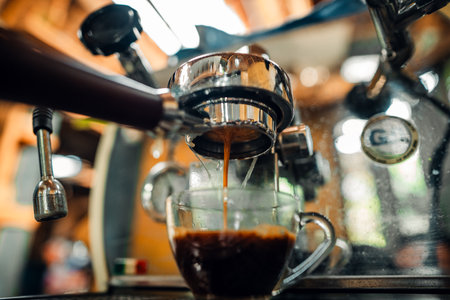Introduction: Brewing Cultures Down Under and Across the US
Coffee is more than just a beverage; it is a deeply ingrained cultural ritual that shapes daily life and social interactions in countries around the world. In the United States, coffee—particularly drip coffee—has become synonymous with convenience, productivity, and the iconic American diner experience. Meanwhile, in Australia, coffee culture has taken a different path, prioritizing quality, craftsmanship, and community over speed and quantity. The contrast between Australian and American coffee preferences offers a fascinating lens through which to examine broader societal values and habits. As specialty coffee continues to gain momentum globally, understanding why Australians rarely drink drip coffee compared to their American counterparts sheds light on how local traditions, history, and consumer expectations have shaped two distinct coffee identities. This cultural comparison is not only relevant for travelers or expatriates but also for anyone interested in how everyday choices reflect deeper cultural narratives.
2. The History of Coffee Preparation Methods
To understand why Australians rarely drink drip coffee, it is essential to examine the divergent histories of coffee preparation in Australia and the United States. The historical roots of each countrys coffee culture have led to different preferences that persist today.
In the United States, drip coffee—sometimes called filter coffee—emerged as a household staple in the early-to-mid 20th century. With the invention of reliable electric drip brewers like Mr. Coffee in the 1970s, Americans embraced the convenience of preparing large quantities of relatively mild coffee at home or at work. This method fit perfectly with American values of efficiency and practicality, especially for busy mornings or long office hours.
Conversely, Australias coffee journey took a distinctive turn post-World War II, when waves of Italian and Greek immigrants brought espresso machines and European café culture. Instead of prioritizing volume and convenience, Australians came to associate quality coffee with barista-made espresso drinks—such as flat whites, cappuccinos, and lattes—enjoyed in local cafés rather than at home or on-the-go.
| Country | Main Historical Influence | Popular Coffee Method | Cultural Preference |
|---|---|---|---|
| United States | Industrialization & Domestic Convenience | Drip Coffee (Filter) | Volume, Efficiency |
| Australia | Post-WWII European Immigration | Espresso-Based Drinks | Café Experience, Quality |
The result is a stark cultural divergence: while American diners and homes are filled with the aroma of drip-brewed coffee poured from glass carafes, Australian cafés pride themselves on artisanal espresso drinks crafted by skilled baristas. This historical context not only explains the limited presence of drip coffee in Australia but also highlights how deeply rooted traditions continue to shape national tastes today.
![]()
3. Espresso Culture Versus Drip Coffee Culture
In Australia, the café scene is synonymous with espresso-based drinks, such as flat whites, cappuccinos, and long blacks. Walk into any Australian café, and youll find that nearly every coffee order starts with a shot of espresso as its foundation. This preference has shaped both the style of coffee served and the skills required by Australian baristas, who are typically trained to master espresso machines and milk texturing. In contrast, American coffee culture is deeply rooted in filter and drip brewing methods. The classic image of a steaming pot of drip coffee on a diner counter or at home is quintessentially American. Here, coffee is often brewed in large batches using filter machines and served black or with a splash of cream and sugar. This difference in brewing preference reflects broader cultural attitudes: Australians tend to see coffee as a crafted experience to be savored, while many Americans view it as an everyday staple for convenience and comfort. Additionally, U.S. diners and households often value quantity—think bottomless cups—while Australians lean toward quality and individualized drinks. As a result, espresso-based beverages dominate Australian menus, whereas drip coffee remains king in America’s kitchens and cafés.
4. The Coffee Shop Experience: Social and Lifestyle Differences
When analyzing why Australians rarely drink drip coffee, it’s essential to understand the distinct café cultures that have developed in Australia and the United States. In Australia, the coffee shop is more than just a place to get caffeinated—it is a social hub, a community gathering space, and a cornerstone of daily life. Australians often view their café visits as an experience, placing high value on the quality of both the coffee and the environment. Baristas are highly trained professionals who treat coffee-making as a craft, with a strong emphasis on espresso-based drinks such as flat whites, cappuccinos, and lattes.
In contrast, American coffee shops frequently cater to speed and convenience. While there are certainly specialty cafés in the US, many Americans still rely on drip coffee from chains or diners as part of a grab-and-go routine. The focus here is often efficiency—customers may stop by for a quick cup on their way to work or during errands rather than lingering to savor their beverage or engage in conversation.
Key Differences in Coffee Shop Culture
| Australia | United States | |
|---|---|---|
| Coffee Preparation | Espresso-based; handcrafted by skilled baristas | Mainly drip coffee; automated or brewed in bulk |
| Café Atmosphere | Relaxed, social, inviting to stay longer | Often designed for quick service and turnover |
| Main Purpose | Socializing and savoring the experience | Convenience and caffeine boost on-the-go |
| Beverage Quality Focus | High-quality beans, precise techniques, attention to detail | Varies widely; quality sometimes secondary to speed/price |
| Customer Interaction | Engaged conversation with baristas and other patrons common | Minimal interaction; transactional nature prevails in many chains |
The Role of Social Rituals in Australian Cafés
This focus on experience has shaped not only what Australians drink but how they drink it. Ordering a flat white is often accompanied by sitting down with friends or colleagues, enjoying brunch, and spending time in thoughtfully designed spaces. In this way, cafés become integral parts of neighborhoods and daily routines—a stark contrast to the American model where coffee consumption can be almost anonymous.
Cultural Impact on Coffee Preferences
These differences explain why drip coffee never became popular in Australia: its mass-produced nature doesn’t align with the values of quality and connection that define Australian café culture. Instead, Australians prefer drinks that showcase craftsmanship and foster social engagement—factors that continue to set their coffee scene apart from that of the US.
5. Consumer Preferences and Palate
When it comes to coffee, Australians and Americans have developed distinct preferences that reflect not only their palates but also their expectations for quality and health. In Australia, espresso-based beverages such as flat whites, cappuccinos, and long blacks dominate the café scene. This preference is rooted in a national appreciation for robust flavors, velvety textures, and the artisanal process of coffee making. Australians often view drip coffee—commonly served in the United States—as lacking depth and complexity, perceiving it as thin or even watered down compared to the intense flavor profile offered by espresso drinks.
Quality expectations are another major factor driving these differences. Australian consumers tend to favor freshly ground beans, precise brewing methods, and barista-crafted drinks over automated or mass-produced coffee. The ritual of ordering a personalized espresso beverage is closely tied to local café culture, where attention to detail and presentation matter just as much as taste. By contrast, many Americans embrace the convenience of drip coffee, which allows for large volumes to be brewed quickly and consumed throughout the day—an attribute that suits the fast-paced American lifestyle and workplace routines.
Health perceptions also play a significant role in shaping preferences. In Australia, there is a widespread belief that espresso-based drinks can be tailored to individual dietary needs—think alternative milks, smaller serving sizes, and less reliance on added sugars. Drip coffee in the U.S., however, is frequently paired with creamers, flavored syrups, or sugar-heavy accompaniments. This contrast has reinforced the notion among Australians that their style of coffee drinking is both more refined and potentially healthier.
Ultimately, these factors combine to make drip coffee less appealing in Australia while reinforcing its popularity in America. The difference goes beyond taste; it reflects deep-seated cultural attitudes toward quality, wellness, and daily rituals surrounding one’s cup of coffee.
6. Economic and Practical Considerations
When comparing Australian and American coffee cultures, economic and practical factors play a significant role in shaping consumer choices. In the United States, drip coffee dominates due to its affordability, ease of preparation, and widespread availability. Drip machines are inexpensive, can brew large quantities at once, and are a staple in homes, offices, and diners across the country. This convenience aligns with the fast-paced American lifestyle, where quick access to caffeine often takes priority over artisanal preparation.
In contrast, Australia’s coffee scene is deeply influenced by its café culture and higher standards for quality. Espresso machines, while more expensive than drip brewers, are considered essential investments for cafés and increasingly for home enthusiasts. This willingness to spend more on quality equipment reflects Australians’ preference for hand-crafted espresso-based drinks over batch-brewed drip coffee. Additionally, Australian cafes typically operate on a smaller scale than their American counterparts, focusing on individualized service rather than mass production.
Market forces also drive these differences. In the US, major chains like Starbucks and Dunkin’ have popularized drip coffee as the standard offering, making it both accessible and affordable through economies of scale. Meanwhile, in Australia, independent cafés dominate the market and compete based on specialty offerings and barista skill, which further reinforces the dominance of espresso drinks. The relatively high cost of labor in Australia also encourages cafés to serve beverages that command higher prices, such as flat whites or lattes, rather than low-margin drip coffee.
Ultimately, pricing structures, equipment choices, and local market dynamics have all contributed to why Australians rarely drink drip coffee compared to Americans. The economic incentives align differently: Americans value speed and quantity at a lower price point; Australians prioritize quality, experience, and craftsmanship—even if it means paying a bit more or waiting a little longer for their daily cup.
7. Conclusion: What Each Culture Can Learn From the Other
In exploring why Australians rarely drink drip coffee compared to Americans, we uncover a fascinating interplay of cultural values, historical influences, and scientific preferences that shape each nations coffee identity. American coffee culture emphasizes convenience, efficiency, and accessibility—qualities embodied by the widespread use of drip coffee makers in homes and offices across the US. In contrast, Australias focus on quality, craftsmanship, and social connection has led to a thriving café scene centered around espresso-based drinks crafted by skilled baristas.
From a scientific standpoint, the method of preparation significantly impacts flavor profiles and caffeine content. Drip coffee often yields a milder taste and higher volume per serving, which suits the fast-paced American lifestyle. Australian espresso culture, however, delivers a concentrated flavor experience in smaller portions, aligning with their appreciation for artisanal food and beverage experiences.
Both cultures have much to gain from mutual appreciation. Americans might find inspiration in Australias dedication to quality and the communal aspect of its café culture—perhaps even slowing down to savor a perfectly pulled flat white. Australians could consider the practicality and inclusivity that drip coffee offers, especially in settings where quick service or large gatherings are valued.
As global travel and digital connections continue to blur boundaries, there is potential for cross-pollination. We may see more Americans experimenting with specialty espresso drinks at home or Australians adopting convenient brewing methods for busy mornings. Ultimately, embracing diversity in coffee preferences can enhance our understanding of how culture shapes our daily rituals—and remind us that theres always something new to discover in every cup.

